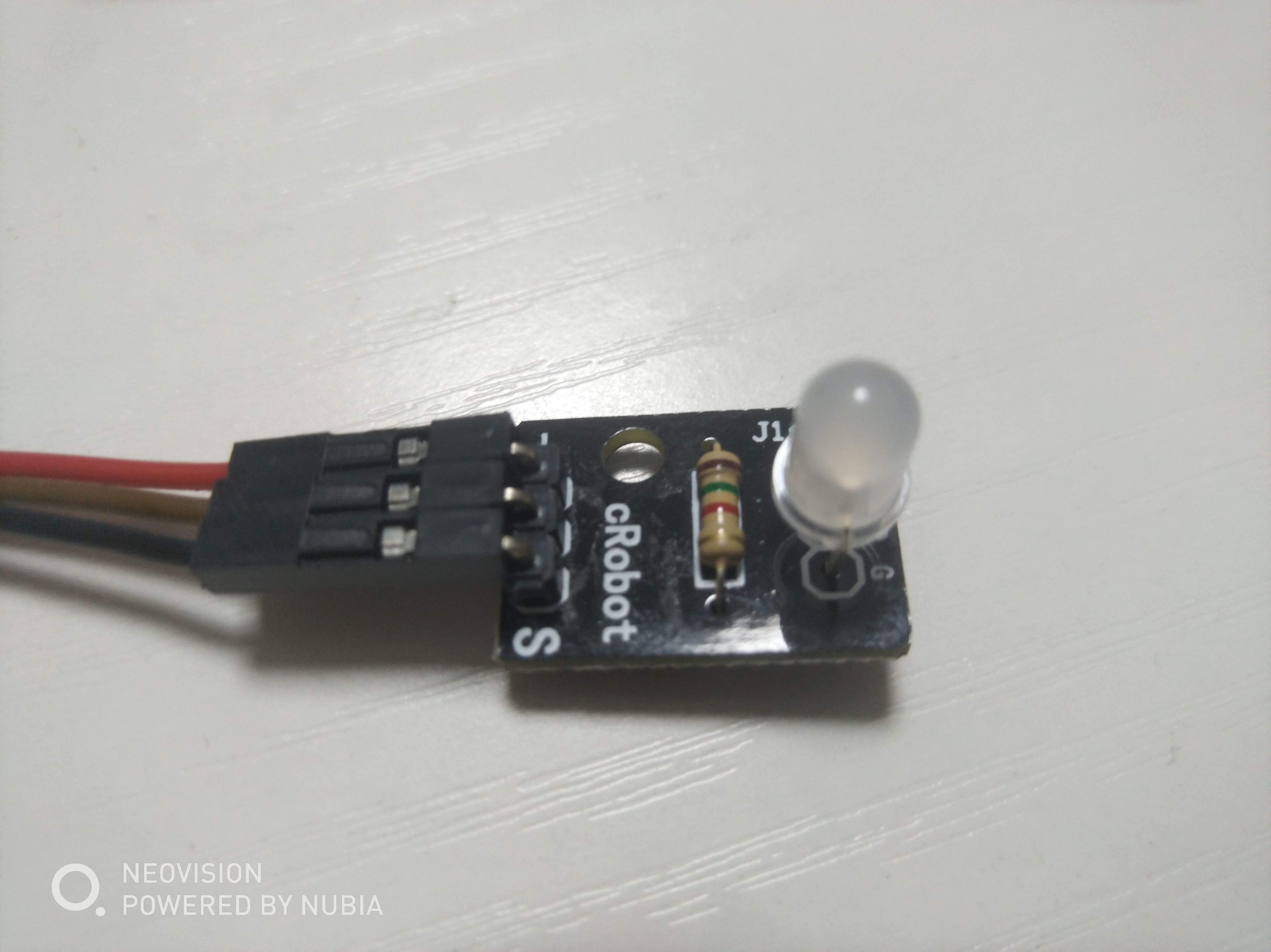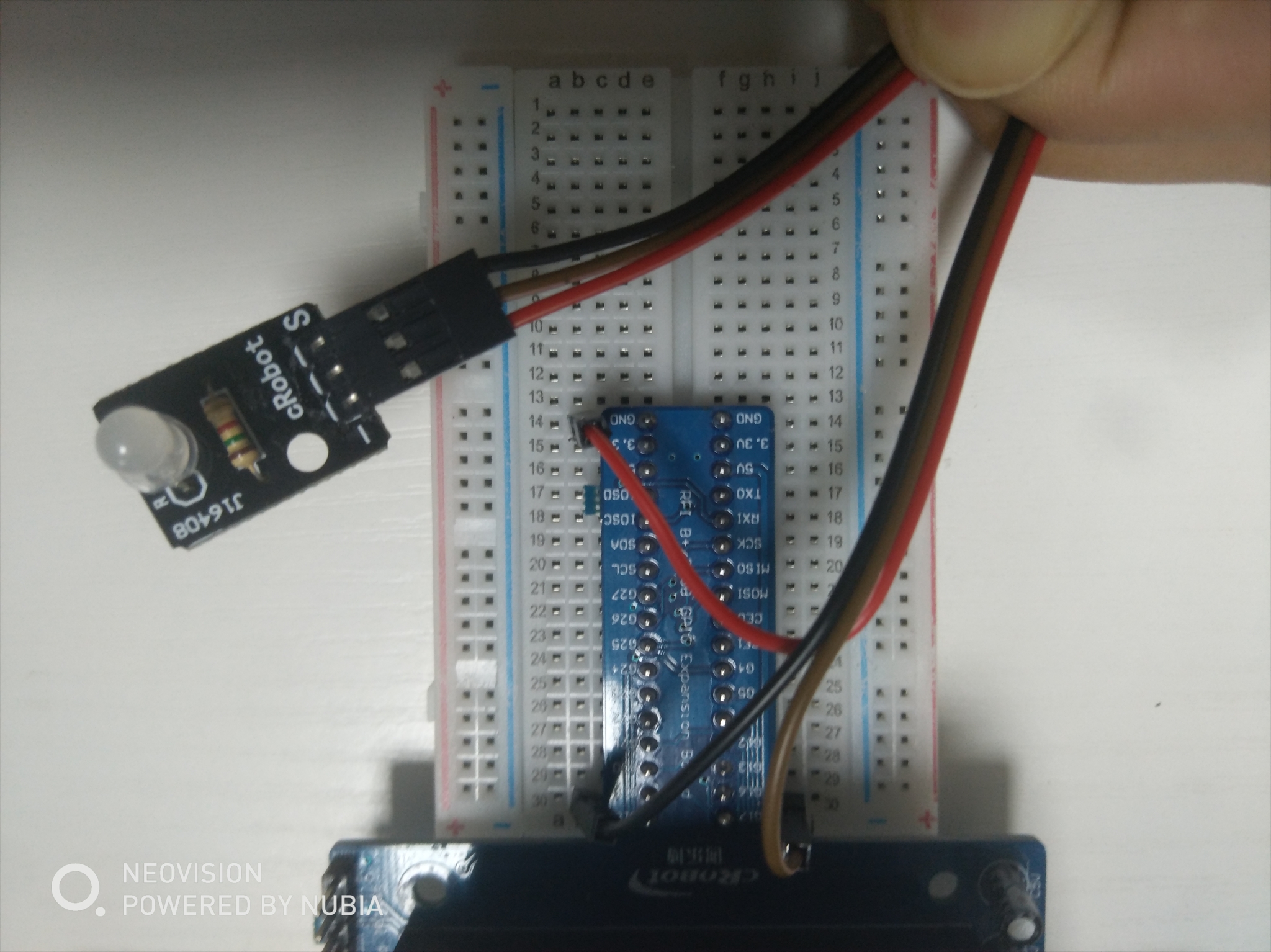By : ReganGao
Email : xssRegan@gmail.com
Date: 2018/10/10
Note: 开始进入编程前,我们要对进行一些基本准备,请看上一篇!
第一个实验,我们从最基本入手,来体会树莓派开发的乐趣!前提是你已经有了一些C/C++/Python
一些基础。因为本系列教程主要以C++&Python 为主,当然也会涉及到Node.js。
一: 介绍与组件
双色LED模块实验为树莓派最基础,最具有代表性的实验。可以带我们初步学习树莓派编程。
双色LED能够发出两种不同颜色的光,通常为红色和绿色,而不是仅有一种颜色。因此常用来做设备状态指示灯。
此实验要用到 Raspberry Pi 主板(带系统),电源适配器,T型扩展板(也可不用),双色LED模块,面包板,跳线等。


二:实验步骤
1, 建立电路连接:
| 树莓派 | T型转接板 | 双色LED模块 |
| GPI00 | GPI017 | Red |
| GND | GND | G |
| GPI01 | GPI018 | Green |

2,运行程序代码(代码会附在最下面)
首先 在home/pi 目录下创建文件夹,用来存放实验DEMO代码。
我这里用ReganDemo 为例。
可以通过 scp 命令 或者使用 FileZilla 工具把所写的代码上传到此目录中后运行。
我这里编程语言与代码文件对应如下 :
C语言上传文件 demo_led_1.c
Python语言上传文件 demo_led_1.py
Node.js 语言上传文件 demo_led_1.js
-----对于C/C++------
编译文件:
c / sudo gcc demo_led_1.c -o demo_led_1 -lwiringPi
c++ / sudo g++ demo_led_1.c -o demo_led_1 -lwiringPi
运行代码:
sudo ./demo_led_1

-----对于Python------
运行文件:
sudo python demo_led_1.py

-----对于Node.js------
下载插件
npm install -S rpio
运行文件
node demo_led_1.js

三:代码附录
------- 对于C++ -------
#include <wiringPi.h> #include <softPwm.h> #include <stdio.h> #define uchar unsigned char #define LedPinRed 0 #define LedPinGreen 1 void ledInit(void) { softPwmCreate(LedPinRed, 0, 100); softPwmCreate(LedPinGreen,0, 100); } void ledColorSet(uchar r_val, uchar g_val) { softPwmWrite(LedPinRed, r_val); softPwmWrite(LedPinGreen, g_val); } int main(void) { int i; if(wiringPiSetup() == -1){ //when initialize wiring failed,print messageto screen printf("setup wiringPi failed !"); return 1; } //printf("linker LedPin : GPIO %d(wiringPi pin) ",LedPin); //when initialize wiring successfully,print message to screen ledInit(); while(1){ ledColorSet(0x55,0x55); //red delay(5000); ledColorSet(0x00,0xff); //green delay(5000); ledColorSet(0xff,0x45); delay(500); ledColorSet(0xff,0xff); delay(500); ledColorSet(0x7c,0xfc); delay(500); } return 0; }
------- 对于Python -------
#!/usr/bin/env python import RPi.GPIO as GPIO import time colors = [0xFF00, 0x00FF, 0x0FF0, 0xF00F] pins = {'pin_R':11, 'pin_G':12} # pins is a dict GPIO.setmode(GPIO.BOARD) # Numbers GPIOs by physical location for i in pins: GPIO.setup(pins[i], GPIO.OUT) # Set pins' mode is output GPIO.output(pins[i], GPIO.HIGH) # Set pins to high(+3.3V) to off led p_R = GPIO.PWM(pins['pin_R'], 2000) # set Frequece to 2KHz p_G = GPIO.PWM(pins['pin_G'], 2000) p_R.start(0) # Initial duty Cycle = 0(leds off) p_G.start(0) def map(x, in_min, in_max, out_min, out_max): return (x - in_min) * (out_max - out_min) / (in_max - in_min) + out_min def setColor(col): # For example : col = 0x112233 R_val = (col & 0x1100) >> 8 G_val = (col & 0x0011) >> 0 R_val = map(R_val, 0, 255, 0, 100) G_val = map(G_val, 0, 255, 0, 100) p_R.ChangeDutyCycle(R_val) # Change duty cycle p_G.ChangeDutyCycle(G_val) def loop(): while True: for col in colors: setColor(col) time.sleep(0.5) def destroy(): p_R.stop() p_G.stop() for i in pins: GPIO.output(pins[i], GPIO.HIGH) # Turn off all leds GPIO.cleanup() if __name__ == "__main__": try: loop() except KeyboardInterrupt: destroy()
------- 对于Node.js -------
var rpio = require('rpio');
// 打开 GPIO17 针脚 作为输出 rpio.open(11, rpio.OUTPUT); function blink(){
// 指定 GPIO17 输出电流 高电平 rpio.write(11, rpio.HIGH); setTimeout(function(){
// 指定 GPIO17 停止输出(LOW) rpio.write(11, rpio.LOW); rpio.open(12, rpio.OUTPUT); rpio.write(12, rpio.HIGH); },1000) } setInterval(blink, 2000);
有两点需要注意:
1. 以上代码均为双色LED 交替闪烁功能,也只供参考!
2. C++编程使用 wiringPi 编码, Python与Node.js均使用物理引脚BOARD编码!
接下来可以继续学习下一编程实验!
------正文完-------